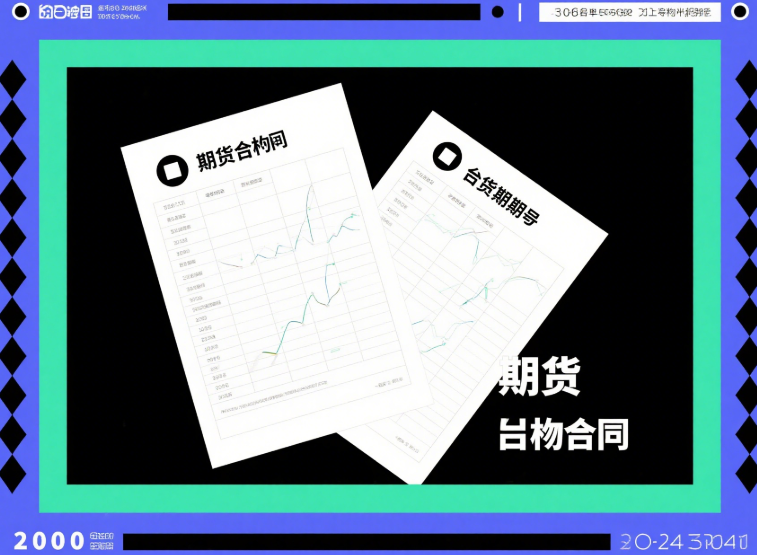In today's financial markets, especially within the realms of Bitcoin and other cryptocurrencies, derivatives trading is gaining increasing attention from investors. As an investment mechanism that can amplify returns, derivatives come with not only high potential rewards but also significant risks. Understanding the characteristics of these derivatives and the inherent risks is crucial for every investor. In this article, we'll conduct an in-depth analysis of six types of derivatives exchanges to help you better understand these markets and make informed investment decisions.
So, what exactly are derivatives? In simple terms, derivatives are financial contracts whose value is derived from the price fluctuations of an underlying asset. In the cryptocurrency market, the most common kinds of derivatives include futures, options, synthetic assets, perpetual contracts, leveraged trading, and crypto funds. Each of these derivatives has its own advantages and disadvantages, catering to different types of investment strategies and risk tolerances.
Let’s walk through the characteristics, pros, cons, and potential risks of these six types of derivatives exchanges.
First up is futures contracts. Futures contracts enable investors to agree to buy or sell an asset at a predetermined price at a specified future date. The primary advantage of futures contracts in the crypto space is that they allow investors to use leverage to amplify their returns. For example, if you predict that Bitcoin's price will rise, you can secure a large investment by using a relatively small amount of capital through a futures contract. However, the risks are equally pronounced; market price fluctuations can lead to substantial losses. For instance, some investors may face mandatory liquidation when Bitcoin’s price fluctuates sharply, meaning their investments could automatically be sold off, leading to a continuous loss of capital.

Next, we have options contracts, which provide investors with greater flexibility. An options contract grants the holder the right, but not the obligation, to buy or sell an asset at a specific price within a designated timeframe. This flexibility makes options suitable for hedging or speculating on higher market risks. However, the complexity of options requires investors to possess a certain level of knowledge and experience. Those who do not fully understand the mechanics of options may make costly mistakes that could lead to the total loss of their investment.
Synthetic assets are another derivatives type. These assets are financial contracts created using blockchain technology that can mimic the performance of real assets. By leveraging synthetic assets, investors can gain exposure to the trading rights of related assets without actually holding the underlying assets. While synthetic assets offer investors the opportunity to access more markets, they typically demand a high level of technical knowledge. For example, decentralized finance (DeFi) platforms like Synthetix allow users to create and trade synthetic assets pegged to Bitcoin, Ethereum, and more. However, the operation of synthetic assets depends on the security of smart contracts, and vulnerabilities in these contracts could lead to losses of user assets.
Next in line are perpetual contracts. These contracts are derivatives without an expiration date, allowing investors to hold positions for the long term. Exchanges use a funding rate mechanism to balance the capital pressures of long and short positions, enabling investors to adjust their holdings based on market conditions. While perpetual contracts offer significant flexibility, their fee structures may confuse some newcomers. Moreover, trading perpetual contracts can be risky, as they may face liquidation risk should market prices fluctuate severely, completely exhausting investors' margin.

Among these derivatives, leveraged trading allows investors to control larger positions with smaller capital inputs. However, the risks of leveraged trading are exceptionally high, as investors can incur substantial losses due to minor market fluctuations. For instance, if you engage in trading with 10x leverage, market movement of just 10% could wipe out your entire capital. Therefore, while leveraging can amplify returns, it is critical to implement effective risk management strategies and set reasonable stop-loss limits.
Finally, let’s examine crypto funds. Crypto funds pool investors’ capital to invest in multiple crypto projects, reducing the risk any single investor would face by concentrating on individual projects. Compared with individual investments, crypto funds typically select projects with strong market foundations and potential. Nevertheless, investors must be aware of management fees and liquidity risks associated with the fund. In case any fund experiences a liquidity crisis, investors may find themselves unable to withdraw their funds promptly. Hence, it’s crucial to understand the management team and investment strategies of a crypto fund before diving in.
In summary, these six types of derivatives exchanges provide a diverse range of financial instruments to meet varying investor needs. However, just as high returns carry hidden risks, participating in derivatives trading necessitates that investors possess robust market knowledge and detailed risk assessment. Choosing the right derivatives trading approach should depend not only on an individual’s risk tolerance but also on staying attuned to market dynamics. Only by thoroughly understanding these tools' characteristics and risks can investors pursue returns while minimizing potential downsides.

I hope this article helps every investor gain clearer insights into the derivatives markets so that they can make informed investment decisions. Ultimately, wise investing goes beyond selecting the right products; it involves effectively managing risks and appropriately allocating assets. Remember, information and education are your keys to success in this market.
















No comments yet